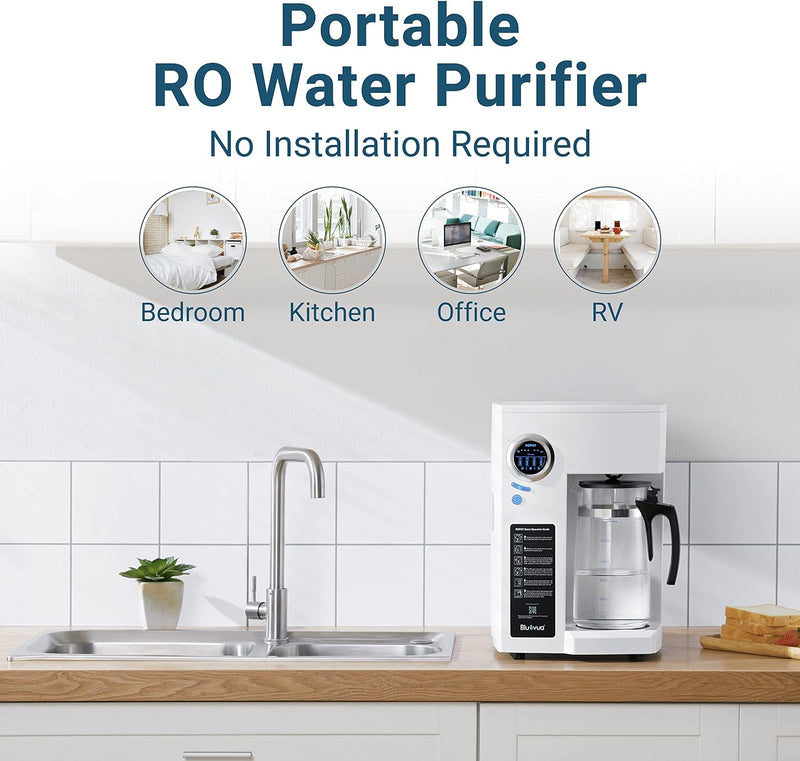Unlock Crystal Clear Water: Discover the Magic of Countertop Reverse Osmosis Systems!
In recent years, countertop reverse osmosis systems have surged in popularity as more people become aware of the importance of clean, purified water. These systems provide an accessible solution for households looking to enhance their water quality without the need for extensive installation or plumbing modifications. Clean water is essential for maintaining good health and overall well-being; it not only hydrates our bodies but also plays a vital role in cooking and cleaning. In this article, we will explore the features, benefits, and functioning of countertop reverse osmosis systems, offering insights into why they might be the perfect addition to your kitchen.

Understanding Reverse Osmosis Technology
At its core, reverse osmosis (RO) is a water purification process that removes contaminants and impurities through a semipermeable membrane. This process involves applying pressure to push water through the membrane, allowing only clean water to pass while trapping larger molecules, such as salts, bacteria, and other pollutants. Unlike traditional filtration methods, which often rely on physical barriers or chemical treatments, reverse osmosis is a more advanced technology that effectively reduces a wide range of contaminants. The membrane's pore size is so small that it can filter out particles as tiny as 0.0001 microns, making it one of the most effective methods for purifying water. Understanding these scientific principles can help you appreciate the effectiveness and reliability of countertop reverse osmosis systems.
Features of Countertop Reverse Osmosis Systems
Countertop reverse osmosis systems come with a variety of features designed to enhance user experience and efficiency. One of the most significant advantages is their compact size, making them ideal for kitchens with limited space. Typically, these systems consist of multiple filtration stages, often including pre-filters to remove larger particles, the RO membrane for fine filtration, and post-filters to polish the water before dispensing. Installation is generally straightforward; many systems can be set up in minutes without the need for professional help, which is a huge plus for those who prefer DIY solutions. Maintenance is also user-friendly, with many systems featuring easy-to-replace filter cartridges. Design considerations, such as aesthetic appeal and user-friendly interfaces, further enhance their attractiveness as a water purification option.
Benefits of Using Countertop Reverse Osmosis Systems
The benefits of countertop reverse osmosis systems extend beyond just improved water quality. One of the most noticeable changes users report is the enhanced taste of their water, as RO systems effectively remove chlorine, sediment, and other taste-altering contaminants. Additionally, these systems are highly effective in removing a wide variety of harmful substances, including heavy metals, bacteria, and pharmaceuticals, contributing to safer drinking water. Convenience is another significant advantage; having a countertop RO system means you no longer need to rely on bottled water, which can be costly and environmentally detrimental. Moreover, considering the long-term savings on bottled water and the health benefits of consuming pure water, investing in a countertop RO system can be a cost-effective solution for many households.
How to Choose the Right Countertop Reverse Osmosis System
Selecting the right countertop reverse osmosis system involves assessing several critical factors. First, consider your water quality needs: if you live in an area with high levels of contaminants or specific concerns (like lead or chlorine), look for systems that target those issues. System capacity is another essential aspect; if your household has high water usage, you may require a model with a higher output. Additionally, evaluate the specific filtration features offered by different systems, such as additional stages of filtration or the presence of remineralization filters that can enhance water taste and health benefits. Taking the time to assess your individual requirements will ensure that you choose a system that meets your needs effectively.
Installation and Maintenance Tips
Installing a countertop reverse osmosis system is generally a straightforward process that can be completed in a few simple steps. Most systems come with comprehensive manuals, but typically, you will need to connect the system to your faucet using the provided adapter. Tools like a wrench may be required, and it's crucial to follow the manufacturer's instructions carefully to ensure a proper fit. Once installed, maintaining your RO system is vital for optimal performance. Regularly check and replace filters according to the manufacturer's recommendations, and periodically inspect connections for leaks. Keeping the system clean and well-maintained not only prolongs its lifespan but also ensures that you continue enjoying the best quality water.
Maximizing Your Water Quality with Countertop RO Systems
In summary, countertop reverse osmosis systems present a practical and effective solution for purifying drinking water at home. With their advanced filtration technology, compact design, and numerous health benefits, these systems are becoming increasingly popular among consumers. By understanding the features and advantages of countertop RO systems, you can make an informed decision about enhancing your household's water quality. If you're considering cleaner, safer drinking water, take the next step to research and explore the options available to you—your health and taste buds will thank you!







Comments